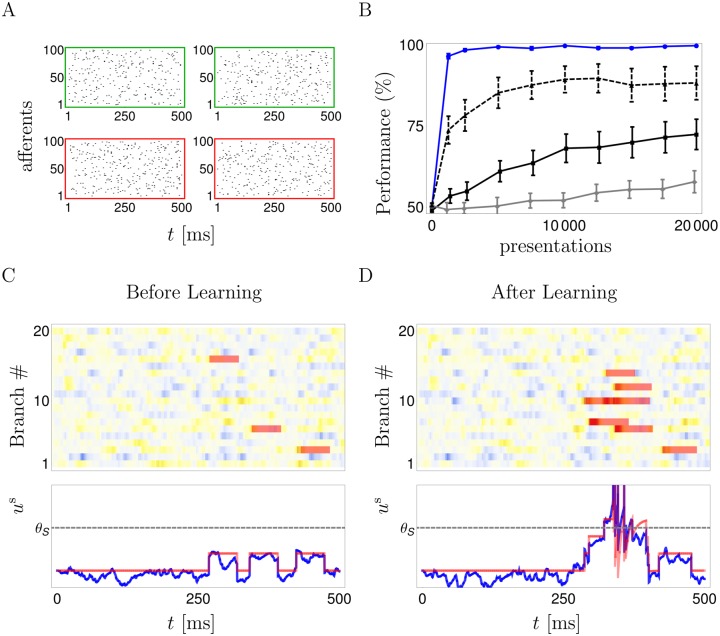Fig 2. Binary classification of frozen input spike patterns by a somatic spike / no-spike code for the reward-modulated somato-dendritic synaptic plasticity (R-sdSP).
A: Four input patterns, the two patterns in the top row should elicit no somatic spikes; the patterns in the bottom row should. B: R-sdSP perfectly learns the classification after roughly 1000 presentations (blue solid). In contrast, classical R-STDP fails when applied to the presynaptic–somatic (‘pre-som’, solid black) or the presynaptic–dendritic (‘pre-den’, gray) spike pairs. R-STDP improves when the dendritic spike generation is suppressed (black dashed), although it does not reach the high performance of R-sdSP. C,D: Dendritic and somatic voltages in response to an input pattern that requires spiking, before (C) and after (D) learning. The initially sparse dendritic spikes (NMDAd(t), red bars, overlaid on a intensity plot) become more numerous, co-align and sum up in the soma to enable the somatic firing. Yellow indicates depolarization. Bottom: Time course of the somatic voltage us(t) (blue) with the contribution of the NMDA-spikes and the somatic spike reset kernel (red).

